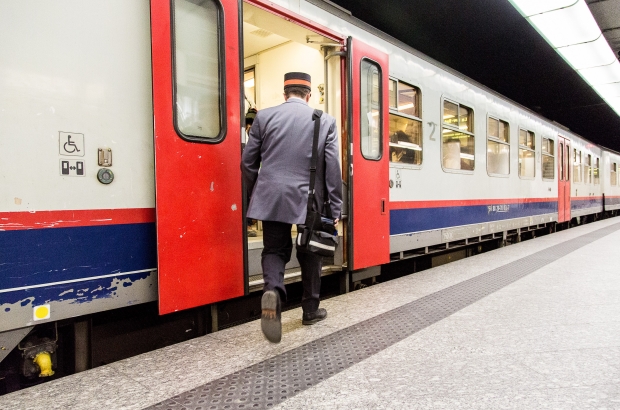- Daily & Weekly newsletters
- Buy & download The Bulletin
- Comment on our articles
Belgian railway company SNCB also feels energy crisis pressure
The energy crisis affecting households across the country has not spared Belgium's railway operator either, with the SNCB looking for ways to save money amid skyrocketing prices for fuel.
The SNCB is one of the biggest consumers of electricity in Belgium, so the pressure is on to find ways to cut back on usage as prices soar.
One way the railway company hopes to do this is through special training in eco-driving, teaching drivers to drive differently in order to consume less electricity along their routes.
This includes taking advantage of terrain changes and strategic braking.
“The dynamic brake is the way to recover the train's kinetic energy,” SNCB instructor Norbert Lamy explained to RTL.
“When the train is running, we will recover this energy and transform it into electrical energy.”
Training in eo-driving predates the current energy crisis. Since 2018, SNCB drivers have been receiving instruction in techniques designed to reduce the energy consumption of the trains they operate.
One of the most important parts of such training is developing familiarity with a route so as to best take advantage of the terrain.
“Knowing whether the line is going up or down allows us to adapt the speed and anticipate drops or gains in speed, depending on the profile of the line,” one driver explained.
Lamy added that adhering to the timetable is also a way to save money: “If we arrive at the station too early, the track may already be occupied. You have to brake early and then you have to accelerate again. This is completely unnecessary braking and acceleration.”
At the moment, drivers are unable to track their consumption because the meters that do so are in the engine room, not the cab. But without eco-driving, a train is estimated to consume significantly more energy, at times up to 30% more.
With 3,800 trains a day, more than 90% of which are powered by electricity, the SNCB’s energy bills were €123 million in 2020 and €223 million so far this year. But next year’s bill is expected to dwarf those at €432 million.
“To reduce the energy bill, we can also work on offices, fixed installations and stations, for example by lowering the setpoint temperature,” SNCB spokesperson Marianne Hiernaux explained.
“This is the temperature at which the heating is turned on: 15°C degrees in the waiting rooms, 19°C degrees in the offices.”
Planned measures to reduce heating costs by lowering temperatures in work spaces, reducing lighting and keeping an eye on the stand-by energy consumption of appliances is expected to bring savings of 7.5% when it comes to fuel usage and 3% for electricity (excluding rail usage).
But the SNCB warns that these savings measures will not make up for the deficit created by the increase in energy prices.
Mobility minister Georges Gilkinet has indicated that government assistance will be needed. “The railways deserve public support commensurate with their usefulness,” he said.
“That is why I will propose to the government to intervene for the increased energy costs that SNCB and Infrabel, like the rest of society, suffer.”
There are currently no plans to limit train services, and it is expected that most train passengers will not notice any of the measures in terms of an effect on their experience.


















